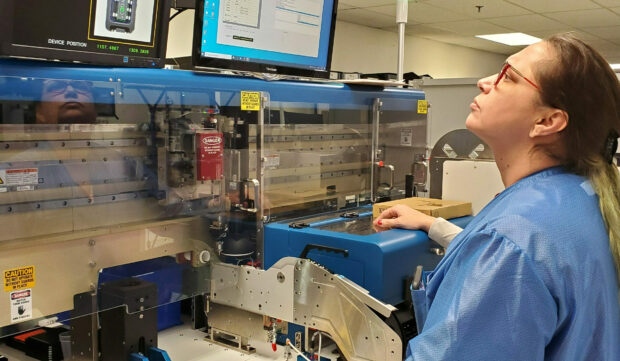HOME | ABOUT US | MEDIA KIT | CONTACT US | INQUIRE
HOME | ABOUT US | MEDIA KIT | CONTACT US | INQUIRE
technical skills AND UNRIVALED WORK ETHIC Create a muscular Labor force.

Economists for years have labored—without much success—to construct a methodology that helps people understand the comparative strengths of one state’s workforce with those of another.
So here’s a suggestion: How about you look at the people who are actually showing up for work?
As of February 2023, that would be slightly better than 97 out of 100 working-age residents of Kansas, according to the state Department of Labor. That 2.7 percent jobless rate is a reflection of current demographic and business trends conspiring to make it as difficult as ever for companies to find, acquire and retain the talent they need in their workforces.
Even if what the federal Department of Labor says is a truer gauge of unemployment, Kansas weighed in with a jobless rate of 4.9 percent, a figure once considered closer to normal in good economic times.
But in Kansas, the issue that seals the deal for employers is the quality of the state’s workforce. From the highly educated population of Johnson County to the “knowledge corridor” of I-70 through Lawrence and Manhattan to the skilled aviation workers in Wichita, the state is teeming with highly qualified workers who bring a farmhand’s work ethic to the job.
In the Kansas City suburbs, Johnson County is a good starting point. The most highly educated of the state’s 105 counties, it ranks No. 23 out of 3,142 counties across the nation, according to the Census Department’s American Community Survey. More than half of the residents 25 and older have at least a bachelor’s degree—almost double the state average. Roughly 21 percent have master’s or professional degrees, while almost 96 percent have a high-school degree.
Sedgwick County is home to the state’s largest city, Wichita, where a strong manufacturing sector has adjusted to the long-term contraction of the general aviation sector. Still, the attributes of the work force there combined to generate a median household income of $60,593 last year. That figure is slightly below the national average, but because of the area’s outstanding metrics in cost of living, those workers enjoy a standard of living nearly 10 percent higher than their peers nationwide.
Wichita remains a manufacturing leviathan for Kansas, churning out more than half the world’s supply of light commercial aircraft through its assembly lines. The productivity of workers built that industry and has kept it going strong desoite some major companies scaling back operations.
Wyandotte County in the Kansas City area is generally considered to be a manufacturing juggernaut, accounting for 8.8 percent of jobs. Sedgwick County, by comparison, weighs in at an eye-popping 22.9 percent. Its reputation for a skilled labor force is one reason why.
Nearly 90 percent of the working-age population has earned a high school diploma, no small achievement in a community dominated by a 46,000-student urban school district in the state’s largest city. But 37.3 percent of working-age residents hold bachelor’s degrees giving the county a competitive edge relative to many other communities of equal size.
And, in the face of repeated, even recent, downturns in general aviation, the machine shops and supporting industries have broadened their skill sets, retrained, and rearmed for competition. Today, blade fabrication for monster wind turbines, production of composites used in applications far beyond aviation, and medical technology advances are all contributing to long-term job growth in Sedgwick County.
Coming additions—as many as 7,200 by 2025—will extend the state’s footprint in semiconductor production and electric-vehicle battery manufacturing.
Topeka is a regional employment center that draws workers from a wide radius. Each day more than 17,000 people commute from outside areas to jobs there. The 17-county Topeka Metropolitan Statistical Area is efficiently connected by the area’s road network and boasts a total population of nearly 234,000.
The quality of this work force equals its quantity, both within and outside of the immediate area. A major factor is the traditional “Midwestern” work ethic. Each year, the region receives high marks from local businesses that, in many cases, have chosen locations here because of the demonstrated productivity and performance advantages of the work force. This is a good environment for businesses seeking workers, one explanation for the several corporate headquarters and consolidated facilities here.
Local schools and vocational training facilities strive to provide courses and programs that reflect the current demands of the business community. And the state’s universities, public and private, provide a steady stream of potential employees, with more than 14,5000 students graduating each year.